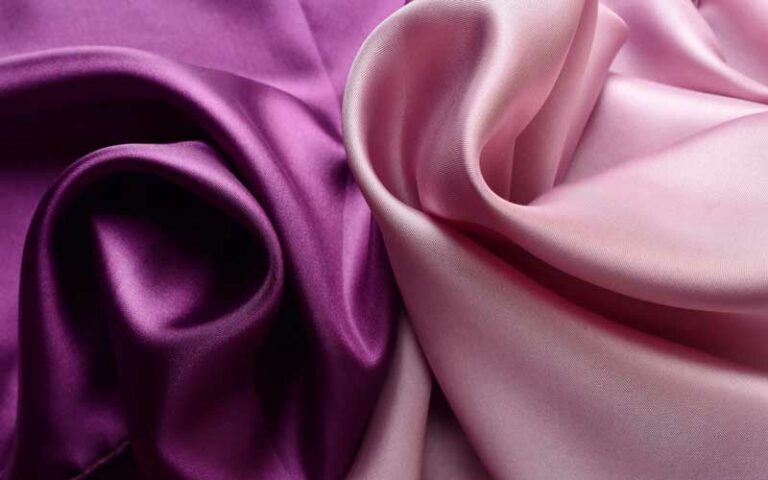Are you wondering if there is a difference between a silk pillowcase and a satin one? It is always better to know the difference between the two regarding your hair’s and skin’s health. Despite their similar appearance and texture, silk and satin are not the same. Both fabrics are excellent choices for your hair, skin and your sleep hygiene.
The difference is a little more than personal preference but not as crucial as some might make it sound. That’s why in today’s article, we’re going to take a deep dive into the realm of fabrics to understand the nature, origin, and physics of silk, satin, and some resemblances you need to know to keep your hair to the fullest of its glory.
So, if you are wondering what’s the difference between silk and satin pillowcases, you are at the right place!
What is silk?
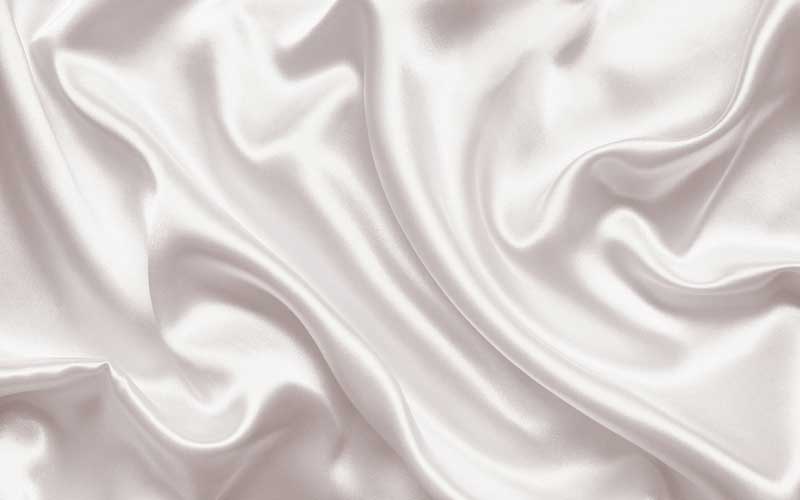
Silk is an animal protein fibre that is produced by certain types of insects for building cocoons and webs. Sounds weird, right? It’s fascinating that something so refined and beautiful would come from bugs, but it’s also fascinating.
The main insect used for silk production in the commercial sector is the mulberry silk moth. Silk is a breathable and smooth fabric, which is considered a highly prized material. The leaders in silk production are China, with approximately 58,000 tons each year and about 74% of the world’s supply of raw silk.
There are different types of silk: Mulberry, Eri, Tasar and Muga. The most popular version is Mulberry, which is from silkworms raised in captivity, creating refined and consistent quality as well as a naturally pure-white colour.
Generally speaking, silk refers to fibre. At the same time, we have momme, which refers to the silk’s weight and reflects the quality and durability of the fabric. Most silk products range between 15-30mm, with the best silk pillowcases starting at 19 momme. For this specific fabric, you should focus on the type of silk, the momme and rating to get a quality product that will last longer and be worth its value.
What is satin?
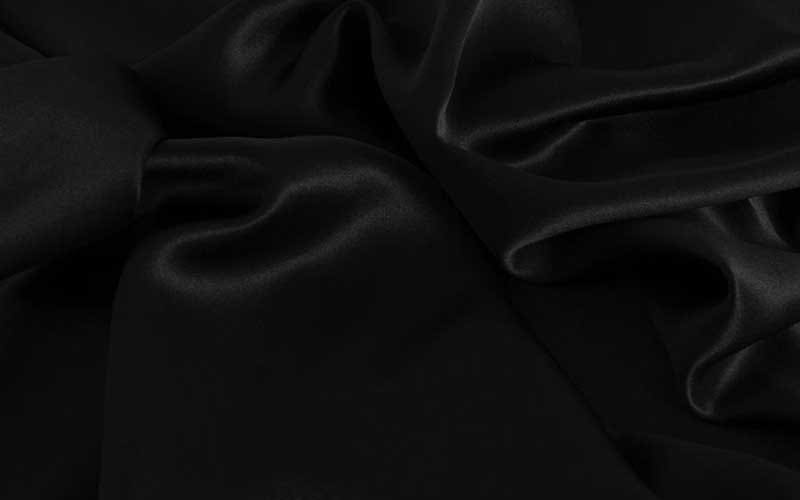
Satin is actually a weave and not a natural fibre like silk. Overall, the fibre is the actual thread from which the material is constructed, while the weave is how its made. Typically, the satin fabric has both a glossy side and a dull side.
It’s crafted by using combinations of other fabrics like nylon, rayon, polyester, and sometimes even silk. The most popular satin is called charmeuse. This is a man-made luxury fabric (polyester) from finely woven material.
What’s the difference between silk and satin?
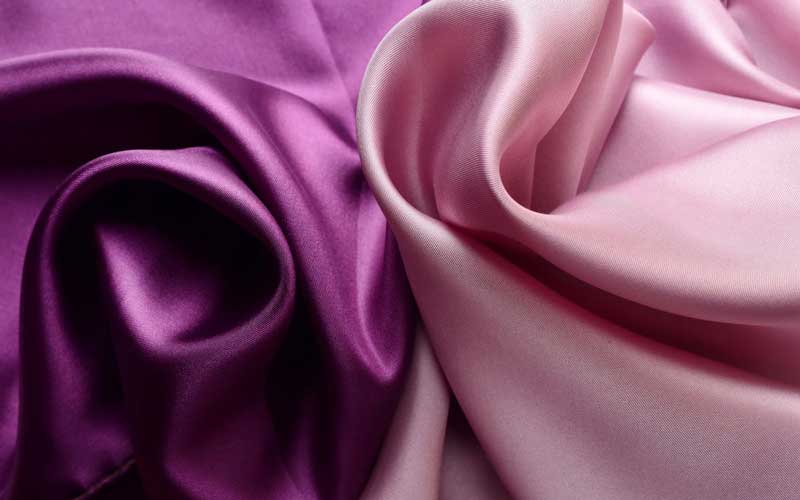
Many people mistake silk and satin. They also think that a pillowcase can’t be made of both! However, that’s not the case since silk refers to fibre, while satin refers to the type of weave.
For example, Mulberry is the highest quality of silk you can find, and it will be constructed from fibres that are longer and more uniform, so the material is smoother and more durable. However, there are a few steps you’ll need to follow to wash and care for such a delicate fabric properly. Whereas faux silk won’t feel as luxurious since it might have other fabrics, and its quality may differ.
How can you tell silk from satin?
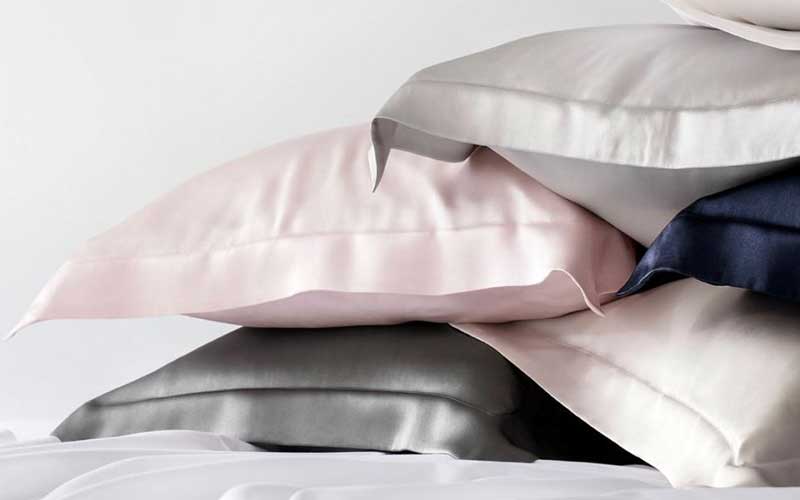
Generally speaking, satin and silk look pretty similar due to their smooth texture and shiny finish. However, there are multiple tells that will allow you to separate them from each other.
The easiest way to do so is by looking at the product’s information (a.k.a. label). By doing so, you will also be able to identify the type of silk or the satin quality. This way, you will get a better idea of whether or not the quality justifies the price tag that goes with it.
Besides the item’s info, you should be able to tell them apart by touch. Feeling the fabric and rubbing it between your fingers is the way to go since silk is a lot softer and smoother. In comparison, satin is slightly rougher to the touch.
In some cases, quality shines through, and you can tell only by looking at the material. Overall, silk has a slight shimmer effect, while satin often comes with a glossy sheen. If you’re looking for the best pillowcase on the market but can seem to tell which one is which, angle it to catch the light and check the reverse side of the fabric.
What are the advantages of silk over satin?
As we’ve already mentioned, silk and satin are both excellent choices for a pillowcase. If you are a fan of luxury, then silk is the way to go. It comes with different advantages, and first, we’re going to discuss the pros of the silk fabric:
- Breathable – the fabric is breathable, so your head and hair won’t get smothered or overheated during the night.
- Hypoallergenic – silk is naturally resistant to fungus, mould, mites, and allergens, which makes it a fantastic choice for allergy sufferers
- No synthetic materials – since it is a natural fibre, silk doesn’t involve any synthetic materials, meaning you can keep your beauty routine au naturel.
- Aid with skin – if you’ve been struggling with acne, a silk pillowcase will be incredibly beneficial for your skin and its complexion since it will help it clear.
What are the advantages of satin over silk?
If you want healthier skin and hair, but the sheer price tag of real silk makes you nervous, fear not! When it comes down to your hair, satin also produces the same desirable effects. So let’s take a look at the other advantages which make it so desirable.
- Affordable – this fabric typically costs a lot less compared to pure silk.
- Widely available – it is created from common materials like polyester, meaning it’s much easier to find and utilize.
- Easier to clean – a satin pillowcase can be thrown into the washer with the rest of your laundry, while silk can’t.
Bottom line
We spend a third of our lives in bed, so we might as well make our experience as pleasant as possible. One of the best ways to do so is by introducing the soft and smooth texture of silk or satin that will help with temperature regulation and the messy hair we have in the morning.
We hope we were able to answer the how and why, and now it’s our turn to hear from you if any questions regarding the subject were left unanswered. If you want to share some information, we would gladly hear about it in the comments below.

